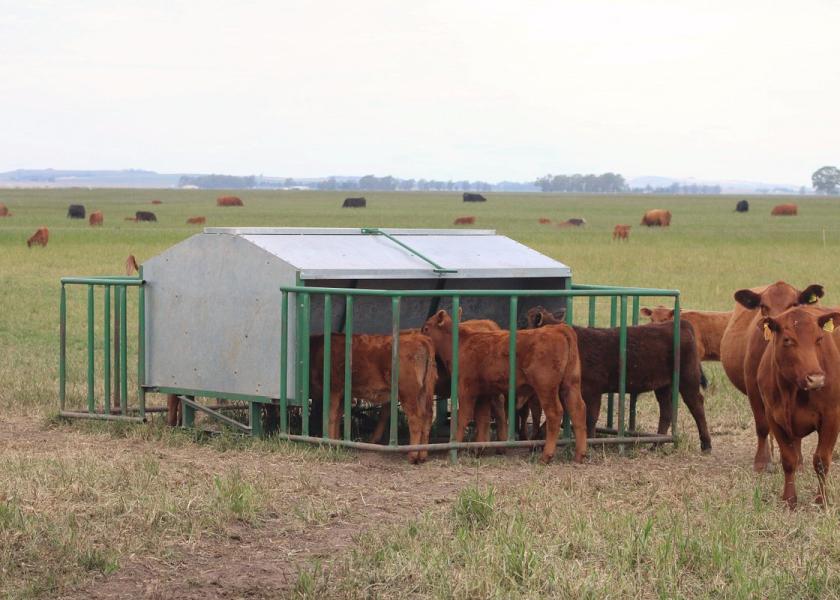Will It Be Profitable to Creep Feed in 2023?

This week we revisit the question of the profitability of creep feeding. As a general rule of thumb, in most circumstances involving a commercial cow/calf operation, creep feeding is not cost effective. That being said, managing your cattle operation as a business enterprise should always be based economics. Evaluating the current cost of inputs versus the value those inputs create is the only logical way to accurately assess profit potential. In the case of creep feeding versus profitability this gets interesting because:
- Creep feeding can increase weaning weights from 20 - 80 pounds but typically the value of added weight gain will not cover the added feed, labor and equipment needed unless feed is exceptionally inexpensive and (or) when value of added weight gain is exceptionally high.
- It is worth noting that currently, feed is relatively expensive AND the value of added weight gain is exceptionally high.
- In a summary of 31 experiments where calves had unlimited access to creep feed, average increased calf weaning weight was 58 pounds. Average creep feed conversion was nine pounds of additional feed to one pound of added calf weight gain.
- Conversion efficiency can range from 3 to 20 pounds of feed required per pound of added weight gain. High-quality, abundant forage results in very poor feed conversion because one high-quality feed (forage) is being replaced by another. Similarly, the greater the plane of maternal nutrition, the poorer the conversion of creep feed to calf gain. In OSU fall-calving experiments, efficiency of creep feed conversion to calf gain is quite good because native range forage quality is low and cows are in a maintenance to negative energy balance (losing weight). Results have been around 4.5 to 5 pounds creep feed:gain when fall-calving cows are getting around 5 pounds of supplemental feed. However, the more supplement the cow is fed, the poorer the creep feed conversion. Situations that reduce calf nutrient availability improves the efficiency of creep; low milk production, low quality forage, overgrazed pastures and thus low forage availability, drought, fall-calving, etc. Of course, the opposite is true as well. In general, limiting creep intake improves creep feed conversion substantially. This is especially true with low-quality forage and protein-rich creep feeds limited to 2 to 3 pounds of intake per day.
- Flesh condition of calves that are marketed at weaning can lead to discounts. The longer calves are exposed to unlimited creep consumption and the lower the forage quality, the more they want to eat. If calves are fed free choice creep for 90 days or longer, there is a risk of over-conditioning leading to a market discount. On the positive side, if heavy creep-fed calves go straight to the feed yard for finishing, carcass weights and in most studies, marbling scores are improved.
- Heavier weaned calves are worth less $ per pound. Typically prices fall $10 - 20/cwt as calves get heavier.
- Calves prefer milk first, palatable creep feed second, then forage. Therefore, creep feeding does not take pressure off of the cows. Don’t make the assumption that calves consume less milk, and therefore, cows produce less milk and thus have more nutrients available for maternal tissue maintenance or even weight gain. This is simply not true. Most experiments that track cow weight change and calf milk intake show that calves consume all the milk available whether they are fed creep fed or not. Creep feeding simply does not change or improve cow weights or body condition.
- Consider that the intensity of creep feed and forage consumption is elastic and opposite. The lower the quality of the forage, the more creep feed and less forage calves want to consume and vice versa.
Producers should make the decision of whether or not to creep based on economics. A simple, quick “Cowboy Math” example based on current economics follows:
Assuming a creep ration is purchased at $400/ton (or $.20/pound) and calves would convert at 10:1 feed to gain ratio, the cost of adding one pound of weaning weight is $2. At this point in the cattle cycle, the value of weaned calves is expected to be well over $2/pound this fall. Will that margin cover the additional labor, cost of a creep feeder, etc.? What is the current condition of your pasture? Will forage be sparse for your spring born calves from now until weaning?
Consider these concepts and the answers to these questions based on your operation. It will help you decide if creep feeding your spring calves offers profit potential this year.
Reference: Creep Feeding. Cow-calf Corner. 2021
Dr Mark Johnson and Dr David Lalman discuss creep feeding options on SUNUPTV Cow-Calf Corner from July 17, 2021. https://www.youtube.com/watch?v=Fudv7Y29qC4







